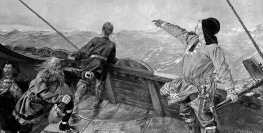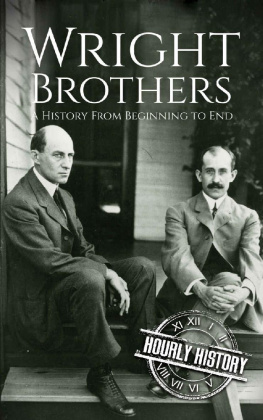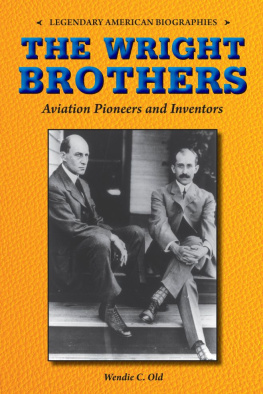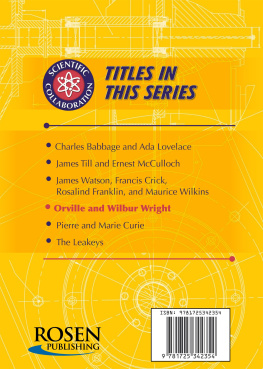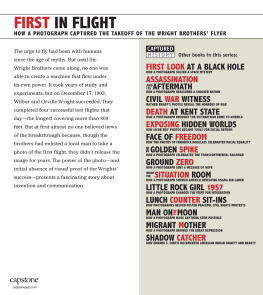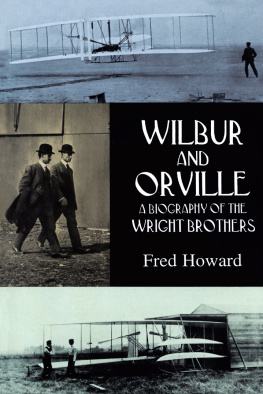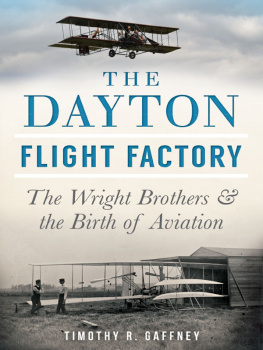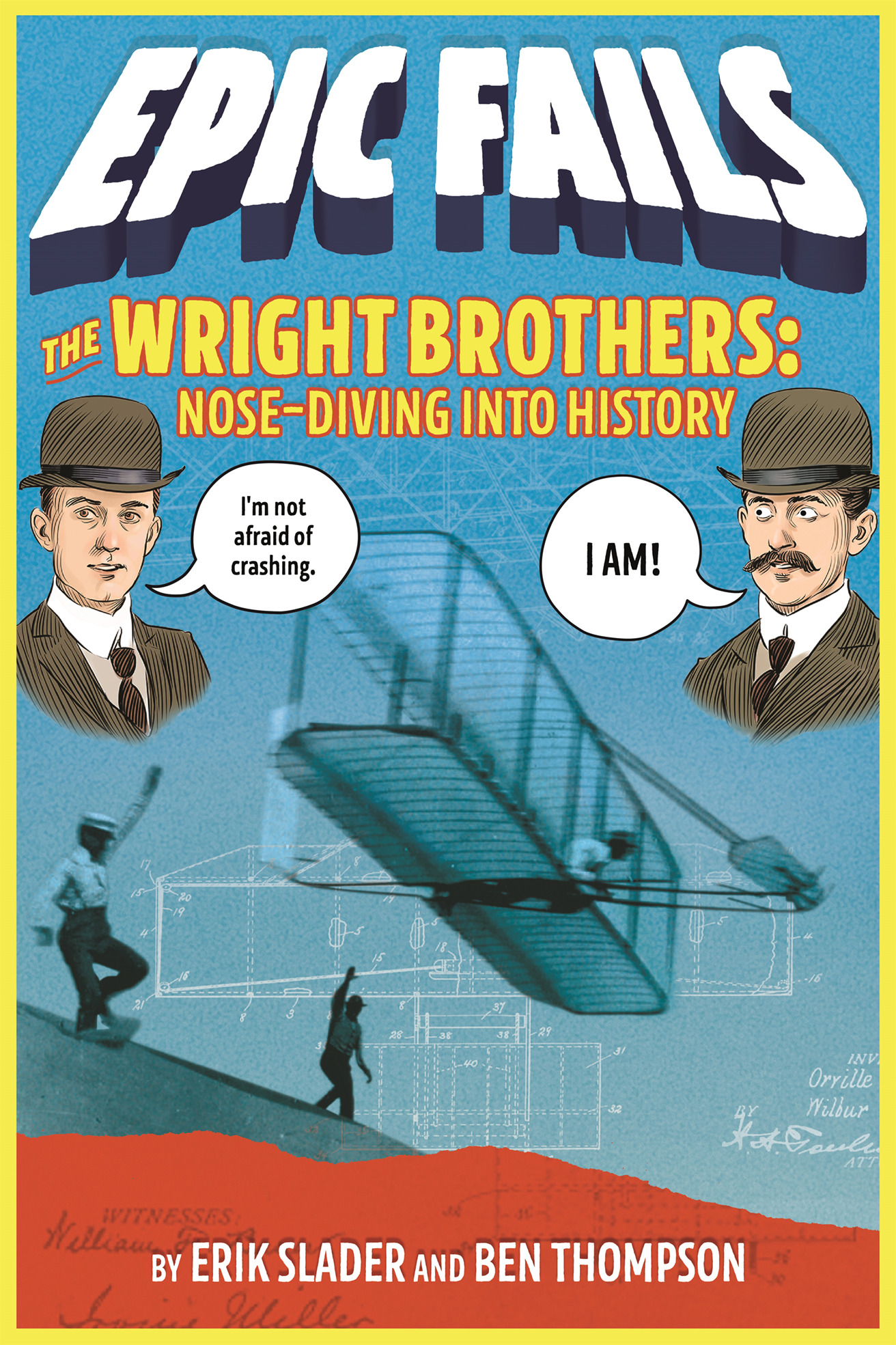Contents
Guide
Pagebreaks of the print version

The author and publisher have provided this e-book to you for your personal use only. You may not make this e-book publicly available in any way. Copyright infringement is against the law. If you believe the copy of this e-book you are reading infringes on the authors copyright, please notify the publisher at: us.macmillanusa.com/piracy.
For our families
Never interrupt someone doing something you said couldnt be done.
Amelia Earhart
July, 1901
If at first you dont succeed youre not the only one. In fact, youre in pretty good company.
On a hot summer day in 1901, Wilbur and Orville Wright stood atop a sand dune in the small town of Kitty Hawk, North Carolina. After a few promising tests with their first glider the previous year, Wilbur and Orville had saved up money for a new aircraft. They worked on it day and night, thought about it nonstop, and finally constructed an improved glider, a biplane that weighed ninety-eight pounds and had a wingspan of twenty-two feet. After months of calculations, blueprints, and hard work, theyd constructed a machine that they believed would actually take a human up into the air and keep him there. This was the thing that would succeed where humans had failed for centuries.
Despite numerous setbacks, unbearably hot weather, and a relentless onslaught of mosquitoes, the brothers stood strong and stayed optimistic about their latest test. They had even invited a crowd of locals to gather on the scorching sand dunes of Kill Devil Hills to witness what would surely be a historic moment.
Wilbur climbed aboard and stretched himself out horizontally on the wing. With Orvilles help, the craft lurched forward over the edge of the hill and into the wind. For a brief moment, Wilbur soared through the air. Seconds later he fell through the air, spiraling into an ungraceful and terrifying nosedive. As the bystanders watched, Wilbur Wright and his wooden glider face-planted into a sandy dune.
Undeterred except for a slightly bruised ego (people laughing at you is never all that much fun), Wilbur got back up, dusted himself off, and got ready for another try. His next attempts at flight were even less successful. Once the wind even blew the glider backward.
Several more failed attempts later, Wilbur barely managed to limp away from the busted biplane. The wooden airframe was smashed, Wilbur was bruised and bloody, and the crowd of spectators had left hours before.
There was no denying it: No history would be made that day. The Wright brothers new and improved glider was a failure. A miserable pile of wreckage strewn across the sand. As the two dragged their battered glider back to their camp, Wilbur turned to his brother and said, Man will not fly for fifty years.
This was their crossroads. Their moment of truth. They could have given up, gone back to their bike shop, and disappeared into time forever.
Instead, they decided not to let this failure stop them from achieving their dreams. Before they even returned home to Ohio, Orville and Wilbur Wright vowed to push on, draw up new plans, and not give up until theyd accomplished their goals.
Wilbur had said that man wouldnt fly for fifty years. But it took him and Orville only two more to prove that statement wrong.
500 BCE1665 CE
There is an art to flying The knack lies in learning how to throw yourself at the ground and miss.
Douglas Adams ( Life, the Universe and Everything )
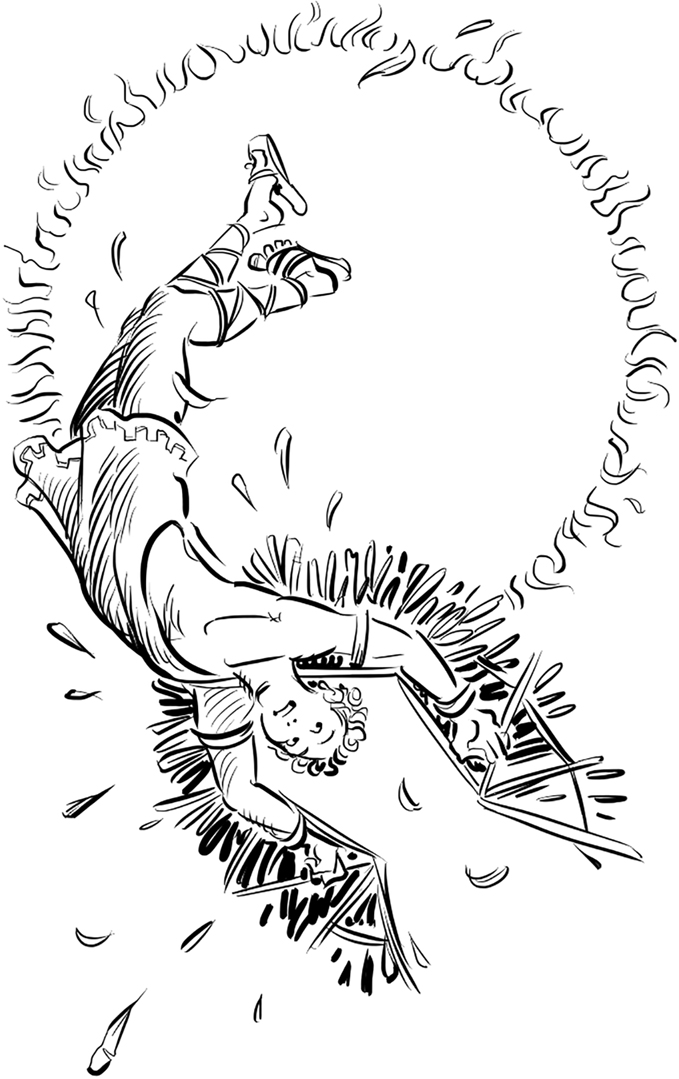

Since the dawn of time, mankind has looked to the skies and dreamed of doing the impossible: soaring effortlessly through the air with the grace of a bird, banking and gliding hundreds of feet above the Earth. Its a dream humans have clung to since the beginning of written language, dating back to the ancient Greek myth of Icarus, a tale about a boy who was able to escape the tower of an evil king by flying out his prison window on a pair of birdlike wings his father built for him out of feathers and wax.
Of course, Icarus was also the earliest recorded Epic Fail of human flight. Because he was having so much fun flying around like a maniac, Icarus climbed too high in the sky, and the sun melted the wax holding his feathered wings together. The wings disintegrated, and Icarus plummeted hundreds of feet to his untimely death. People today still use the expression dont fly too close to the sun when they try to warn you not to do something stupid.
Despite the cautionary tale of Icarus, people still tried to figure out how to make a man fly. As you might have noticed, this isnt a particularly easy thing to do. Humans arent really designed to fly through the air like beakless pterodactyls. We dont have wings, we dont have jetpacks embedded in our feet, we arent particularly graceful animals, and we dont draw power from Earths yellow sun as Superman does when he flies. So where do you start?
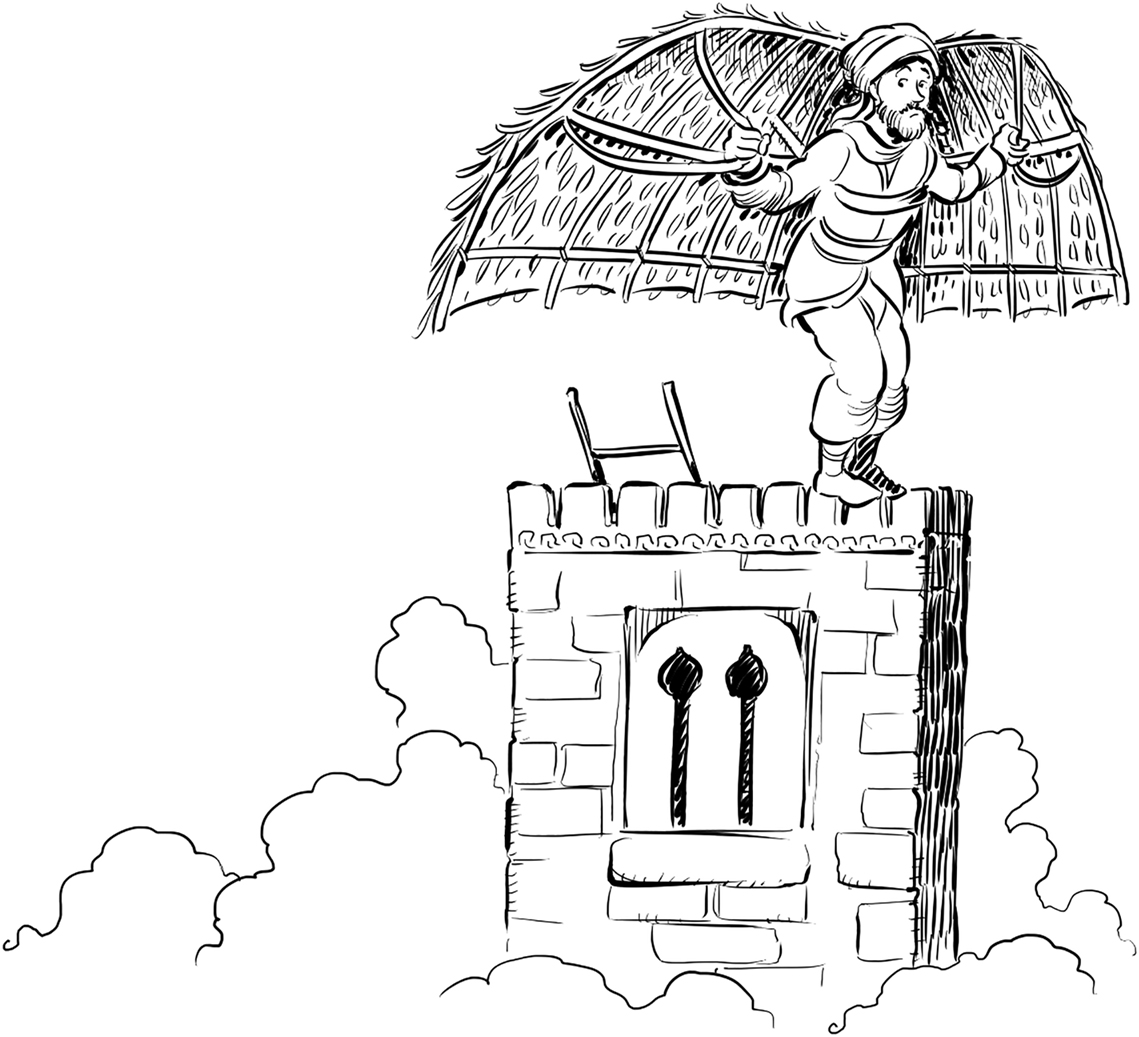

In 852 CE a daredevil inventor named Armen Firman tried to get it done straight up Icarus-style. He put on a huge cloak with wooden struts holding it open (it kind of looked like a wingsuit), wallpapered it in feathers, and jumped off the tallest tower in Crdoba, Spain. Much to his surprise, but to no one elses, he plummeted to the ground almost immediately. As he was falling, however, something interesting happenedhis homemade glider caught the wind for a moment, and it actually slowed his fall a little. It didnt slow Armen down enough that he didnt break nearly every bone in his body, but sometimes making discoveries can be quite painful.
This wacky stunt inspired a scholar named Abbas Ibn Firnas to spend his life pursuing what it would really take to glide in the wind. Abbas was a Muslim mathematician, engineer, chemist, and inventor who had designed everything from water clocks to astronomical star charts. Abbas may have witnessed Armen Firmans flight (in fact, the history here is so sketchy that he and Firman might have even been the same guy ) and decided to spend the next several decades studying the flight of birds, their wingspans, and their graceful movements through the air.
At the age of sixty-five, a full twenty-three years after Armen Firmans flight, Abbas Ibn Firnas constructed a glider of silk, wood, and vulture feathers; ignored the naysayers who told him he was just going to splat himself like a water balloon; and made his way to the tallest cliff he could find. Fueled by determination, and with a large crowd from Crdoba watching from a nearby cliff, Abbas Ibn Firnas got a running start and took a flying leap of faith.
To the shock and surprise of the onlookers, Abbas Ibn Firnas did not immediately fall screaming to a painful death below. Instead, he glided through the air, soaring like a bird for an impressive amount of time. But Abbass elation soon gave way to a pressing concern because despite all the work hed put into figuring out taking off and gliding through the air, he hadnt put much thought into how to actually maneuver the glideror, perhaps more important, how to land it. Without any control over his descent, the poor guy came crashing to the ground like an oversize paper airplane.





